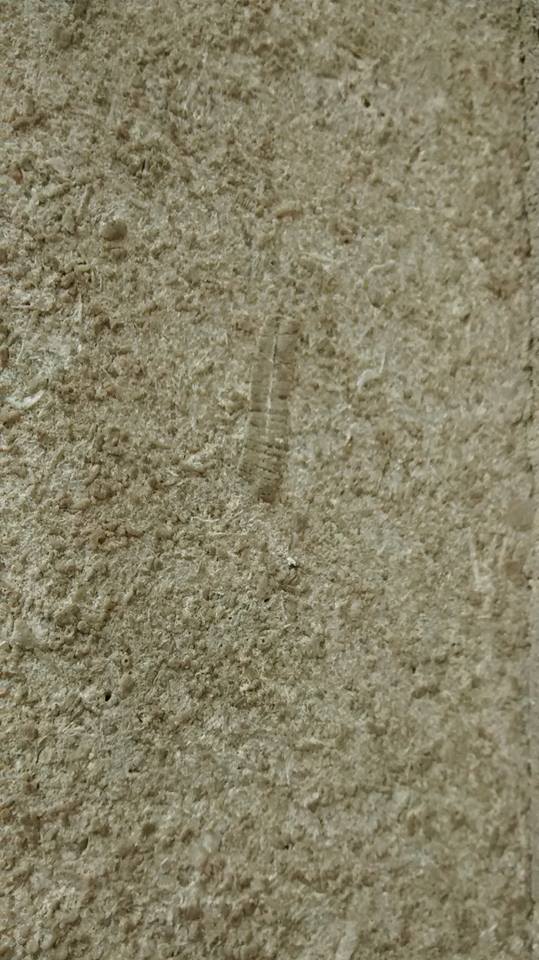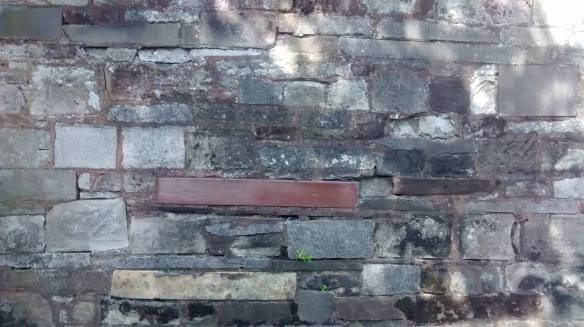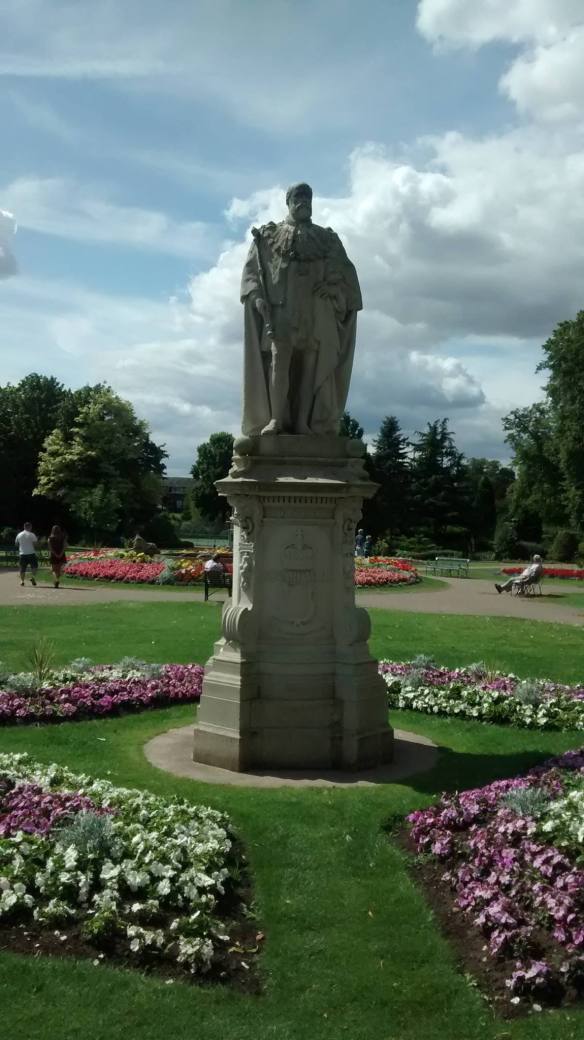Lichfield is about as far as you can get from the sea. Somebody once wrote to the Guardian to say there was a plaque somewhere in the city making this claim but I’ve never seen it. However, being stuck in the middle of the country has not prevented the formation of the Lichfield Lighthouse Company, a group who meet at the Kings Head to sing sea shanties each month. It also didn’t stop me from heading out to look for shells in the city centre yesterday.
I’d read about the London Pavement Geology project over breakfast and I persuaded the other half to put his geology degree to good use and help me find out what Lichfield is made of, other than the ubiquitous sandstone (lovely though it is).
Our first port of call was another of landlocked Lichfield’s nautical links. Unless you live under a rock, you’ll probably be familiar with Beacon Park’s statue of Captain Smith which someone from Hanley in Stoke on Trent tries to appropriate whenever there’s a new chapter in the Titanic story, due to the mistaken belief that the statue was originally intended for their town. On this occasion, it wasn’t the bronze captain but the plinth he was stood on that interested me. The nearby plaque told me it was Cornish Granite, a material which has also been used at the Titanic Memorial in London and the memorial at Belfast. I wonder whether there are any symbolic reasons for choosing this stone alongside the practical and aesthetic ones?
Not far from the Captain, King Edward VII stands on a base made of Hopton Wood stone. Get up close and you can see that the limestone is full of fossils including (and please correct me if I’m wrong) corals, crinoids and brachiopods from around 350 million years ago when the area that was to eventually become Derbyshire was under water. Lichfield wasn’t always so far from the sea! It seems a similar stone has been used for the plinth Samuel Johnson sits on in the Market Square, as that too is full of fossils.

 Of all the building materials we saw on our travels, the most unusual were to be found in a wall on Christchurch Lane. According to a booklet on the history of Leomansley compiled by the Friends of Christ Church, it was built by Cloggie Smith who used anything suitable that he had in his yard at the time. So, no Portland Stone here, just two Belfast Sinks. Are there any other examples of unorthodox construction materials used in and around the city?
Of all the building materials we saw on our travels, the most unusual were to be found in a wall on Christchurch Lane. According to a booklet on the history of Leomansley compiled by the Friends of Christ Church, it was built by Cloggie Smith who used anything suitable that he had in his yard at the time. So, no Portland Stone here, just two Belfast Sinks. Are there any other examples of unorthodox construction materials used in and around the city?
You’ve probably guessed that I am way out of my depth when talking about geology, but the point is that after eleven years, seven months and two days here in Lichfield, someone made me look afresh at things so familiar that I barely saw them any more. Sometimes, the most amazing things are right under your nose. Or, in this case, under Dr Johnson’s and King Edward VII’s noses.








As you walk down Burton Old Road with St Michael’s church on your right hand side, there is an old brick canopy which must have once been over somebody’s fireplace, built into the wall on the left hand side of the road. It always makes me smile and wonder where it once came from! If I was able I would send you a photo but I’m not good at technology!!
LikeLike
That’s brilliant! Will have a look on my travels,cheers Tracey 🙂
LikeLike
Or is it a canopy over a spring – Greenhill has a lot of springs
LikeLike
The link given for “mistaken Belief” leads to the Bham Mail. They say “experts” sink the myth.
Well, while Lichfield was chosen for the reasons given, there was a deal of opposition to the siting there by the locals. See Brownhills Bob here…
http://brownhillsbob.com/?s=Commander+smith&submit=Search
LikeLike
Oh yes I remember that! I’ve changed the link to that post as its much more informative!
LikeLike
When I worked on the Lichfield Mercury we did a feature on Captain Smith and the Titanic to coincide with the film Titanic, and I spent hours down in the cellar looking through the files, and found the original reports about plans for the statue, which clearly state it was always intended for Lichfield, because the city was the centre of the diocese.
I was surprised to find the paper also carried extensive contemporaneous accounts of the disaster (in those days it contained national and local news) and it made heartrending reading.
LikeLike
I used to live in Burton Old Road as a boy and never noticed this! I shall revisit sometime.
However I do recall that on the opposite side, about 20 yards down from the (long flight) steps, there used to be an inlet cut into the sandstone that had a watering trough for horses. You couldn’t see it the last time I walked down there (6 Aug 2015) as it was completely overgrown with grasses etc.
LikeLike
Will post a photo if we find it! Might be worth looking for the watering trough site later on in the year when all the vegentation has died back (Winter doeshave some advantages!)
LikeLike
Just on eof the interesting facts included in the Lichfield Sculpture Trail! – an initiative by Peter Walker
LikeLike
Which one? The fossils, the Hanley myth, the granite or the Belfast sinks? 😉
LikeLike
The soils within the county of Lichfield are various; in some parts clay, and rich marle; in others sandy; the meadows, a black peat, contain a large quantity of bogwood; from the appearance of the water, we may suppose beds of ironstone and coal lie beneath; on the north and south sides of the city are quarries of a tolerably hard stone, which has heretofore been much used in building; the roads are kept in good repair, the pits near the city furnishing excellent gravel*
In the geological collection of Richard Wright, M.D., F.L.S., and M.G.S., are specimens of fossils, &c, found in the bed of gravel on the Birmingham road; amongst which are swine stone, containing fossils of organised bodies, similar to the Somnuites of Scirpi, Toad stone, Almond stone, Pudding stone, Obsidian or Volcanic glass, a beautiful specimen of native Orpiment, Madriporites, Tubiporites similar to the tubipora musica, entrochi, specimens of argilicious stones, having the arborescent appearance of the mocha stone; chalcedonic agates in a state of decomposition….
1819…A short Account of the City of Lichfield
LikeLike
That part about fossils in the Birmingham Rd gravel is interesting and love those names! Pudding stone!
LikeLike